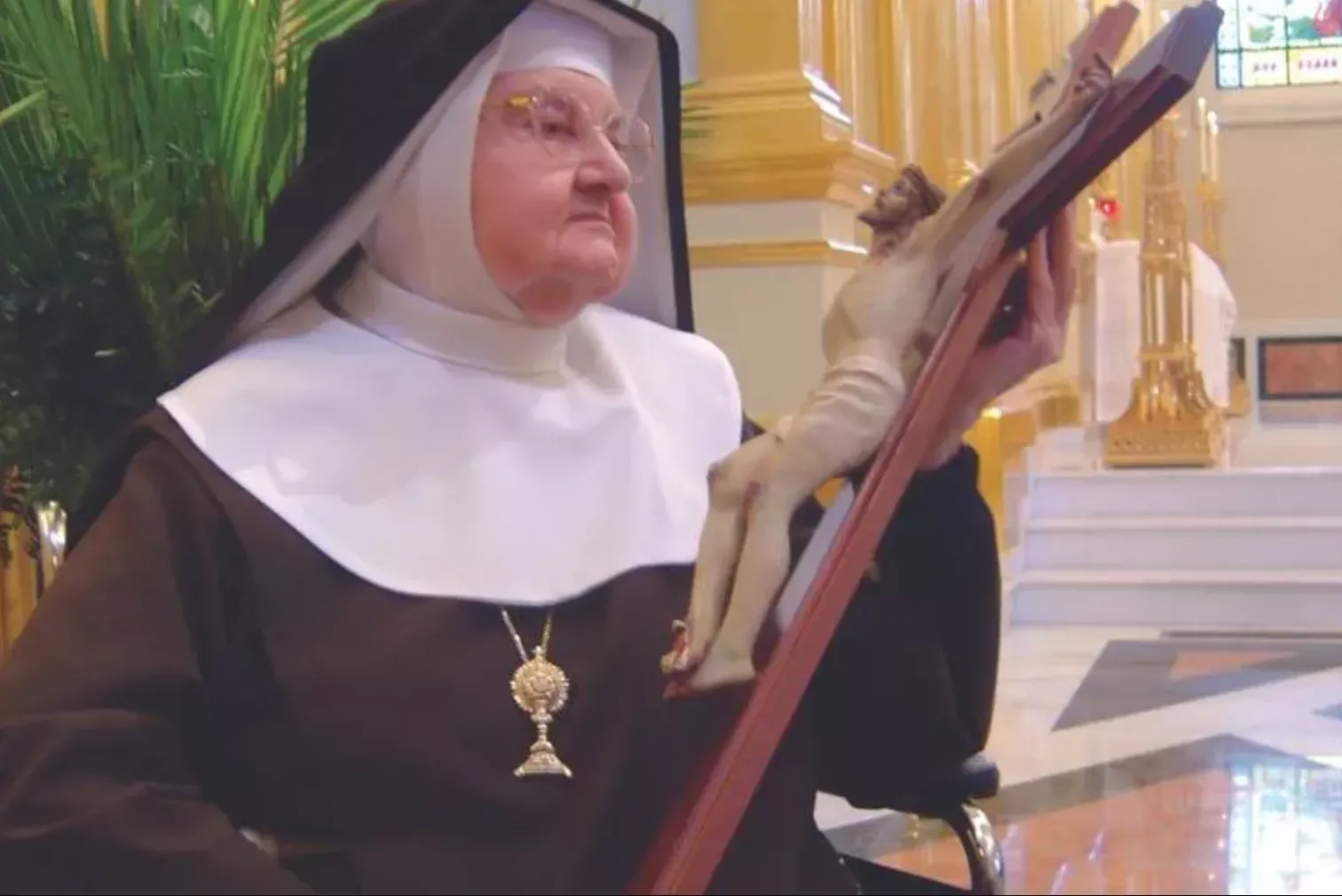“I wanted to spread this Good News using the same medium,” he said. “I’m sure there are a lot of people who will be touched by contemporary sacred art. And if I can give my hand to this beautiful mission, by my profession, that’s fantastic. It was very natural.”
In November 2018, one of Micico’s paintings was gifted to the Archdiocese of Nagasaki. Micico’s “Holy Mother of Sorrow and Hope” was hung in Nagasaki's Immaculate Conception Cathedral in the Marian chapel, which is dedicated to the victims of the 1945 atomic bomb.
It shows Our Lady of Sorrow in the foreground, with the background depicting the exploding atomic bomb and the burning city beneath.
“I experienced that painting can be an instrument, very useful, very strong,” the painter said. “And it goes directly to the heart, like music. Even without understanding it people can stand in front of it with mouth wide open, looking at it, contemplating it.”
After his conversion, Micico learned more about the history of Christian persecution in Japan. Christianity was outlawed starting around 1600 until 1873. In the late 16th century, military ruler Toyotomi Hideyoshi expelled the missionaries who had brought the faith to Japan, had religious objects and Bibles destroyed. There were thousands of martyrs.
(Story continues below)
The few Catholic lay people who survived preserved the faith orally and through baptism, the only sacrament they had, for hundreds of years. During this period, they created their own sacred art, Micico said.
Some pieces were visibly religious, such as “Ecce Homo” style images of Christ. In many others, however, the Christian symbolism, for safety, was hidden in a Buddhist or Shinto style. For example, they would paint a traditional Buddhist female figure, but add a baby to her arms to create an image of the Madonna and Christ child.
“This clandestine art is so beautiful to see, as their devotion took form in this visible form,” Micico said.
“When I think of myself in that situation, I think, why would someone risk their life by painting sacred pictures? I mean, it would have been easier for them to survive without painting those pictures, but they wanted to manifest their love for the Lord.”
“Sacred art,” he said, “is not for one person, or one group of people, but for everybody, for all the generations.”
This article was originally published on Catholic News Agency on Nov. 13, 2019.
Hannah Brockhaus is Catholic News Agency's senior Rome correspondent. She grew up in Omaha, Nebraska, and has a degree in English from Truman State University in Missouri.








